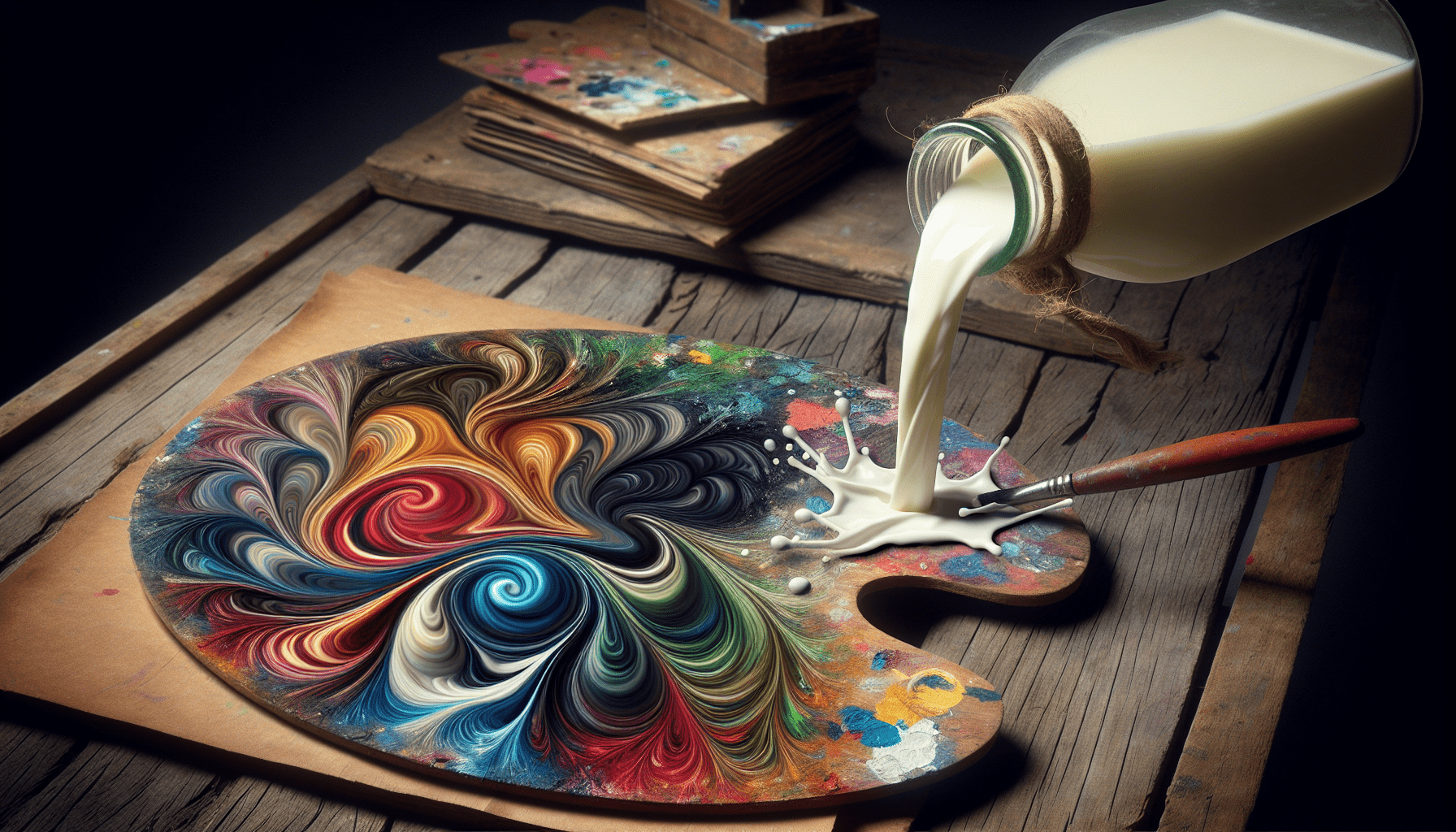Have you ever wondered if you can mix casein and acrylic paint to achieve new artistic effects or textures in your work? As an artist or someone interested in painting, you might be looking to experiment with different mediums to expand your creative horizons. Understanding the compatibility and unique properties of both casein and acrylic paints can help you make informed decisions when blending these materials.
Understanding the Basics of Casein and Acrylic Paint
Before discussing whether these paints can be mixed, it’s important to understand what each type of paint is and what distinguishes them.
What is Casein Paint?
Casein paint is a water-based medium made from milk protein (casein), available in a powder form that can be mixed with water before application. Known for its smooth, matte finish and vibrant coloration, casein paint has been used for centuries in various art forms. It is valued for its quick-drying properties and the ability to adhere well to a variety of surfaces.
Key Characteristics of Casein Paint
Casein paint offers several advantages: it dries quickly, provides a matte and even finish, and is known for its lightfastness, meaning it resists fading over time when exposed to light. It has a consistency that allows for both precision and flexibility, which is why many illustrators and designers favor it. However, casein can become water-resistant once dry, but it is not entirely waterproof, making it less suitable for outdoor applications without proper sealing.
What is Acrylic Paint?
Acrylic paint, on the other hand, is also water-based but is made using synthetic polymer emulsions. Widely praised for its versatility, acrylic paint can mimic the qualities of both watercolor and oil paints depending on how it is used. Acrylics dry much faster than oils and can create a range of textures and finishes, from glossy to matte, depending on the medium mixed with them.
Key Characteristics of Acrylic Paint
Acrylics are renowned for their quick-drying nature, durability, and ability to adhere to a vast array of surfaces, including canvas, paper, wood, and even some metals and plastics. They are water-resistant once dry, offering excellent durability and flexibility in various environments. Their vibrant saturation and permanence make them a popular choice for many artists.
Mixing Casein and Acrylic Paints: Compatibility
The primary question is whether these two distinct types of paint can be mixed without compromising their individual qualities.
Chemical Composition and Interaction
When considering mixing casein and acrylic, the differences in chemical composition are crucial. While both are water-based, acrylic paint is composed of acrylic polymer emulsions, and casein paint is made from natural milk protein. Mixing these two substances could result in unpredictable changes in texture, drying time, and adhesion properties.
Potential Outcome of Mixing
One potential outcome when mixing casein and acrylic paints is an altered drying rate. Acrylics are notorious for quick drying, while casein can also dry fast but has a different texture. By combining them, you might achieve a novel texture, but the durability and matte or glossy nature of the final product may be affected. Furthermore, because acrylics become water-resistant upon drying, while casein does not entirely, this could impact how the mixture behaves once it is applied and dried.

Practical Techniques in Mixing Casein and Acrylic Paints
If you decide to experiment with mixing these paints, understanding some practical techniques and potential outcomes can enhance your creative process.
Step-by-Step Mixing Guide
-
Preparation: Start by preparing small batches. Mix casein paint according to the manufacturer’s guide, and have your acrylic paint ready.
-
Experimentation: Use a palette knife to blend a small amount of casein with acrylic on a palette. Observe changes in color, consistency, and drying time as you mix them.
-
Application: Test the mixture on a small canvas or piece of paper to see how it applies and dries. Pay attention to whether the paint layers well or if it separates.
-
Adjustments: Depending on the results, you might need to adjust ratios or apply medium thinners or extenders to reach your desired effect.
Potential Challenges in Mixing
One of the biggest challenges in mixing casein and acrylic is achieving consistency in the end result. Acrylic paint’s synthetic nature may overpower the natural qualities of casein, resulting in uneven drying, unexpected color shifts, or issues with adhesion.
Creative Potential of Mixing Casein and Acrylic Paints
Despite potential challenges, mixing these paints can open up new creative possibilities and unique finishes.
Unique Textures and Effects
By combining the matte texture of casein with the vibrant sheen of acrylics, you can create unique textures that are not achievable through individual use of either paint. This can be particularly useful for artists looking to add depth and character to their work.
Artistic Applications
Artists can exploit the distinct drying times and textures for layered, multimedia pieces. For instance, using casein for initial layers can give a matte base, while applying acrylics on top can create highlights and contrasts that pop.
Advantages Over Single Medium Usage
Mixing these paints might offer a range not available through the singular use of acrylic or casein. For instance, acrylic’s fast drying might be slowed when mixed with casein, providing more working time similar to what oil paints offer.

Considerations for Quality and Preservation
Working with mixed mediums in art requires consideration of how their combined properties impact the longstanding quality and durability of your work.
Longevity and Durability
While acrylic paints are durable and highly resistant to light exposure, adding casein into the mixture may affect these properties. It’s crucial to prepare for potential risks of fading or cracking over time. Applying a protective varnish can help in preserving the artwork’s integrity.
Surface Preparation and Priming
Proper surface preparation is essential when mixing these mediums. Use a suitable gesso that can accommodate both kinds of paints to ensure adherence and longevity.
Sealing the Artwork
Once your painting is complete, applying a sealant or varnish designed for mixed media can protect the surface from environmental damage and enhance color depth. This step is crucial as it compensates for the water resistance that might be compromised by mixing the two paints.
Conclusion
While mixing casein and acrylic paints can present challenges due to their different compositions, it also offers artists an opportunity to explore new creative dimensions and textures. By understanding the implications of mixing these mediums, adjusting techniques accordingly, and ensuring proper preservation, both professional and aspiring artists can expand their artistic repertoire. The key is to balance creativity with knowledge to produce visually stunning and long-lasting art pieces. Through careful experimentation and consideration of the materials’ attributes, you have the potential to unlock a new world of painting possibilities.



